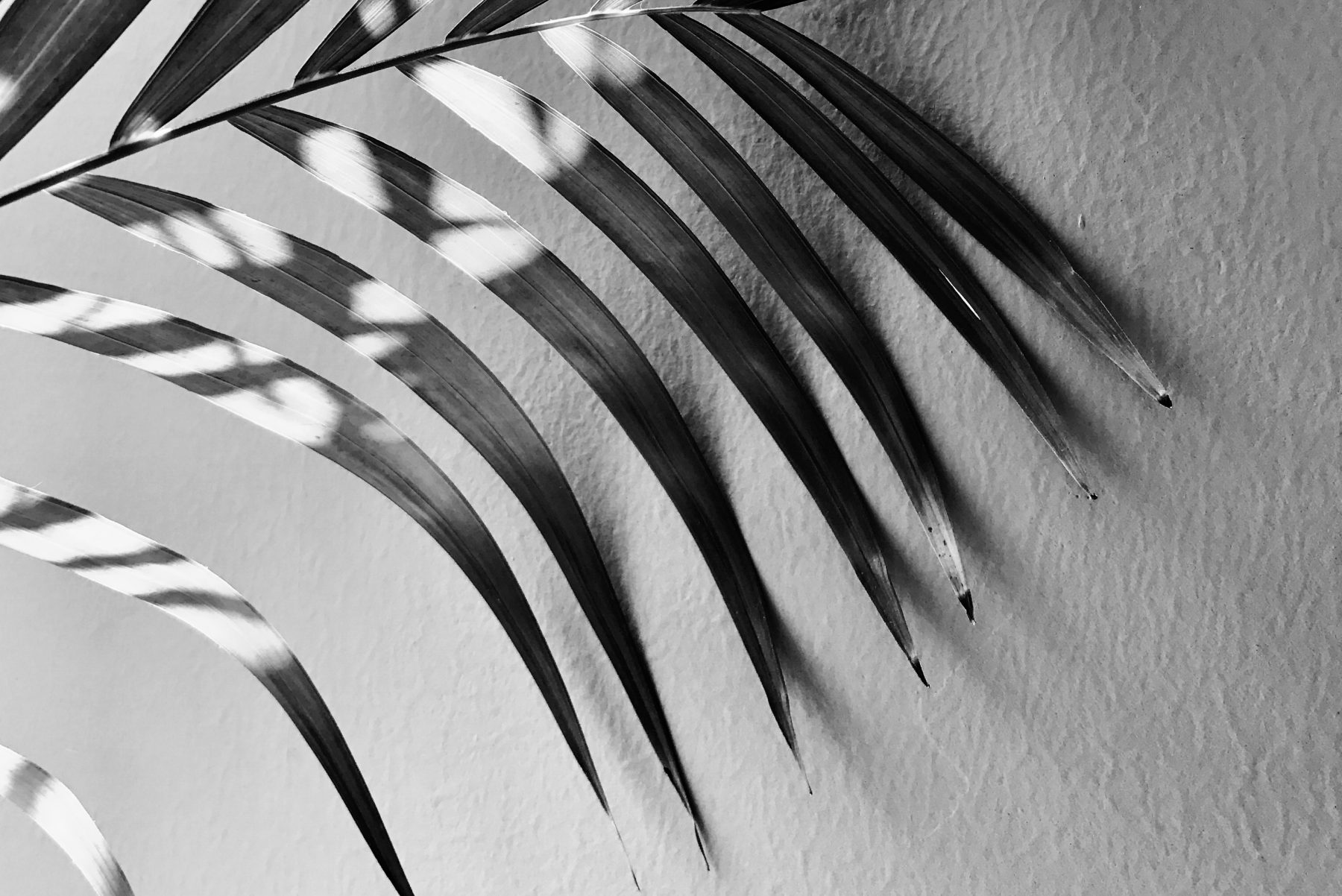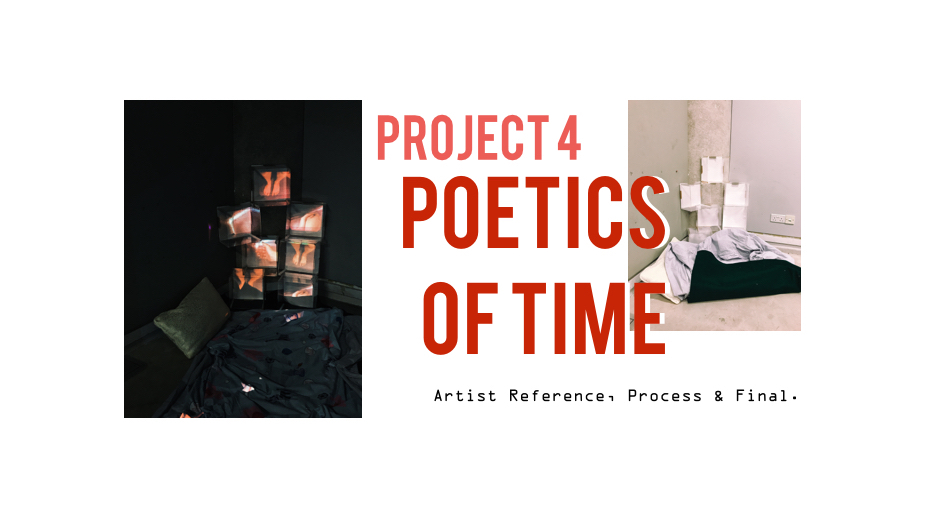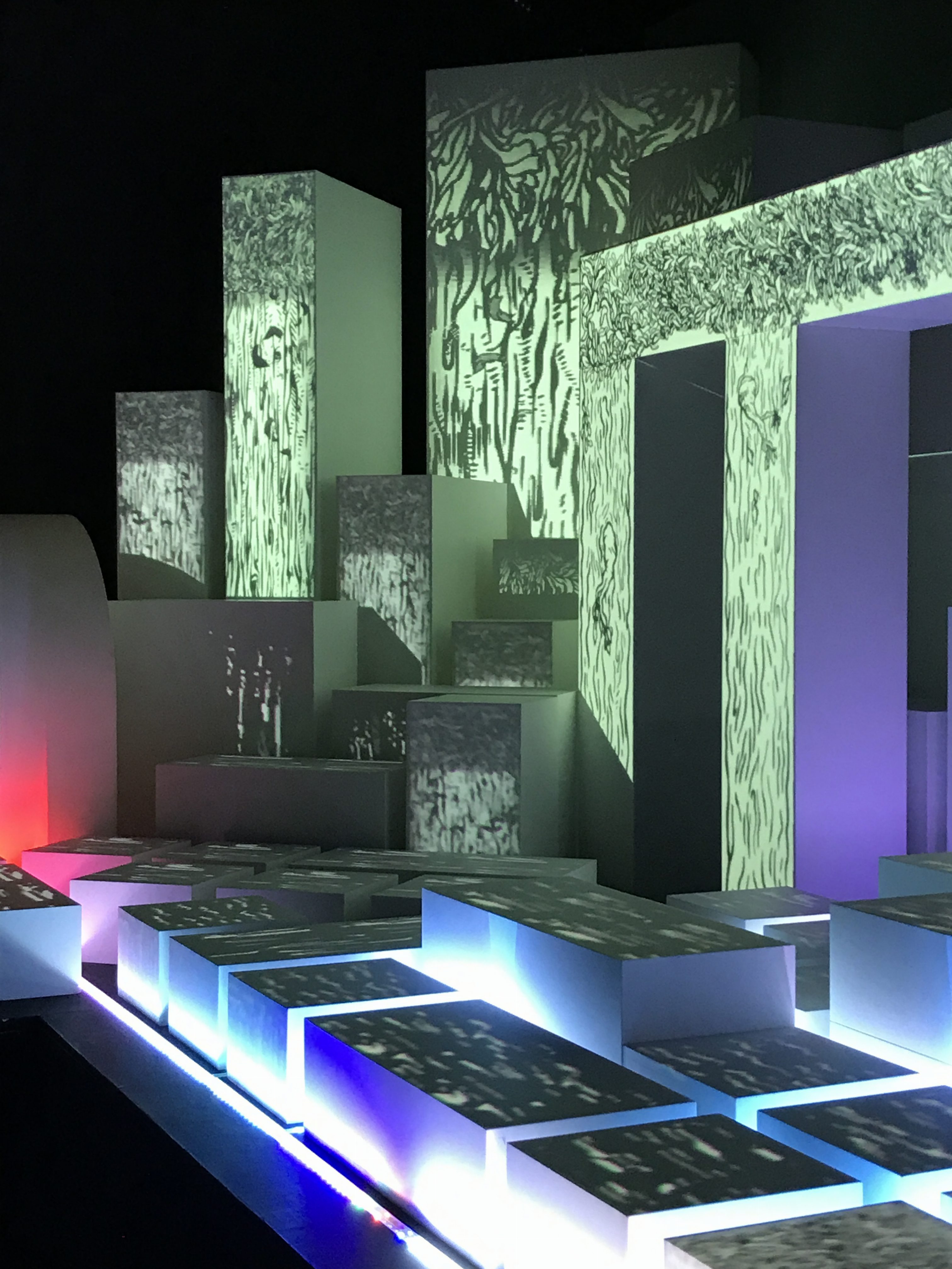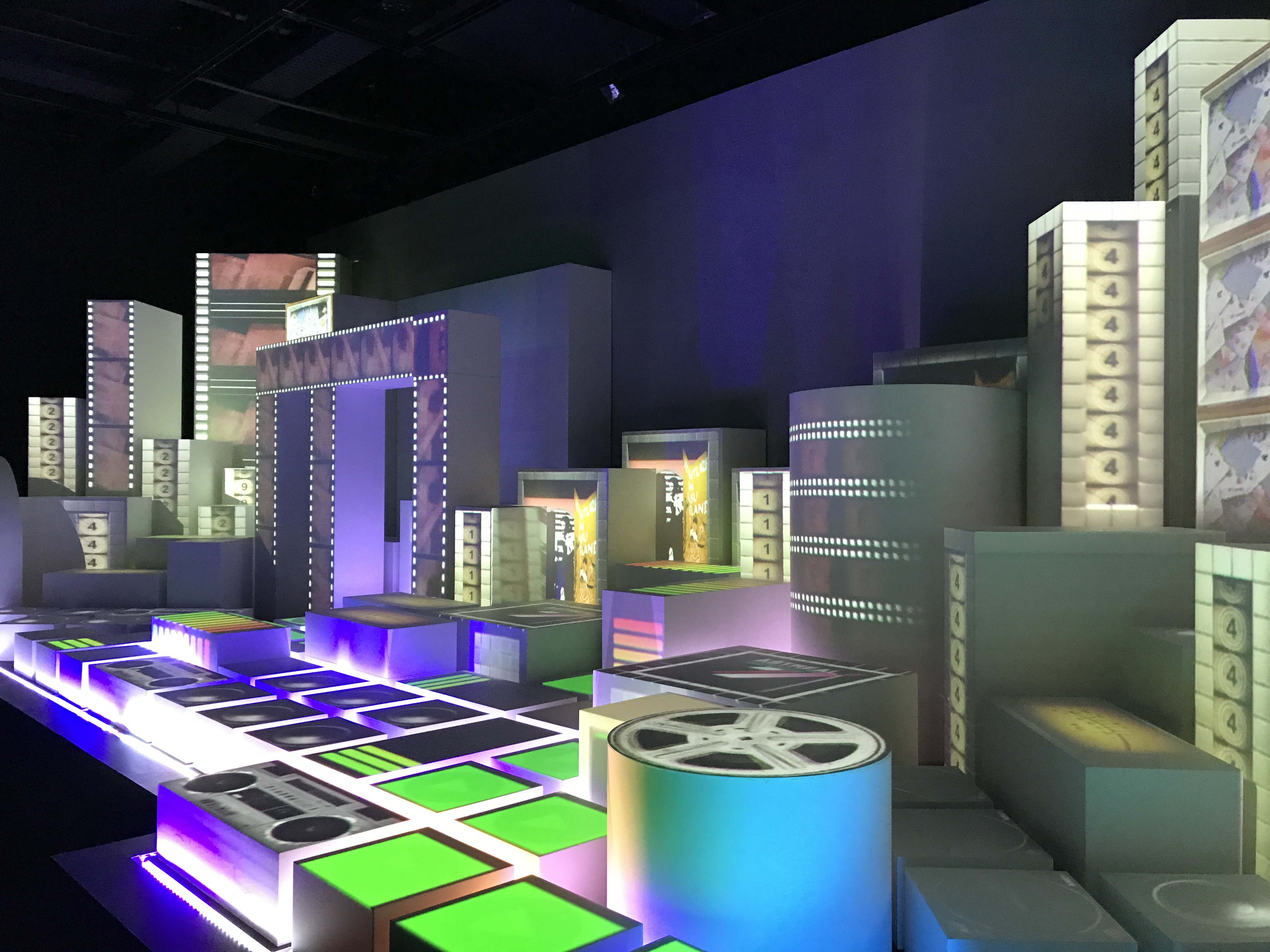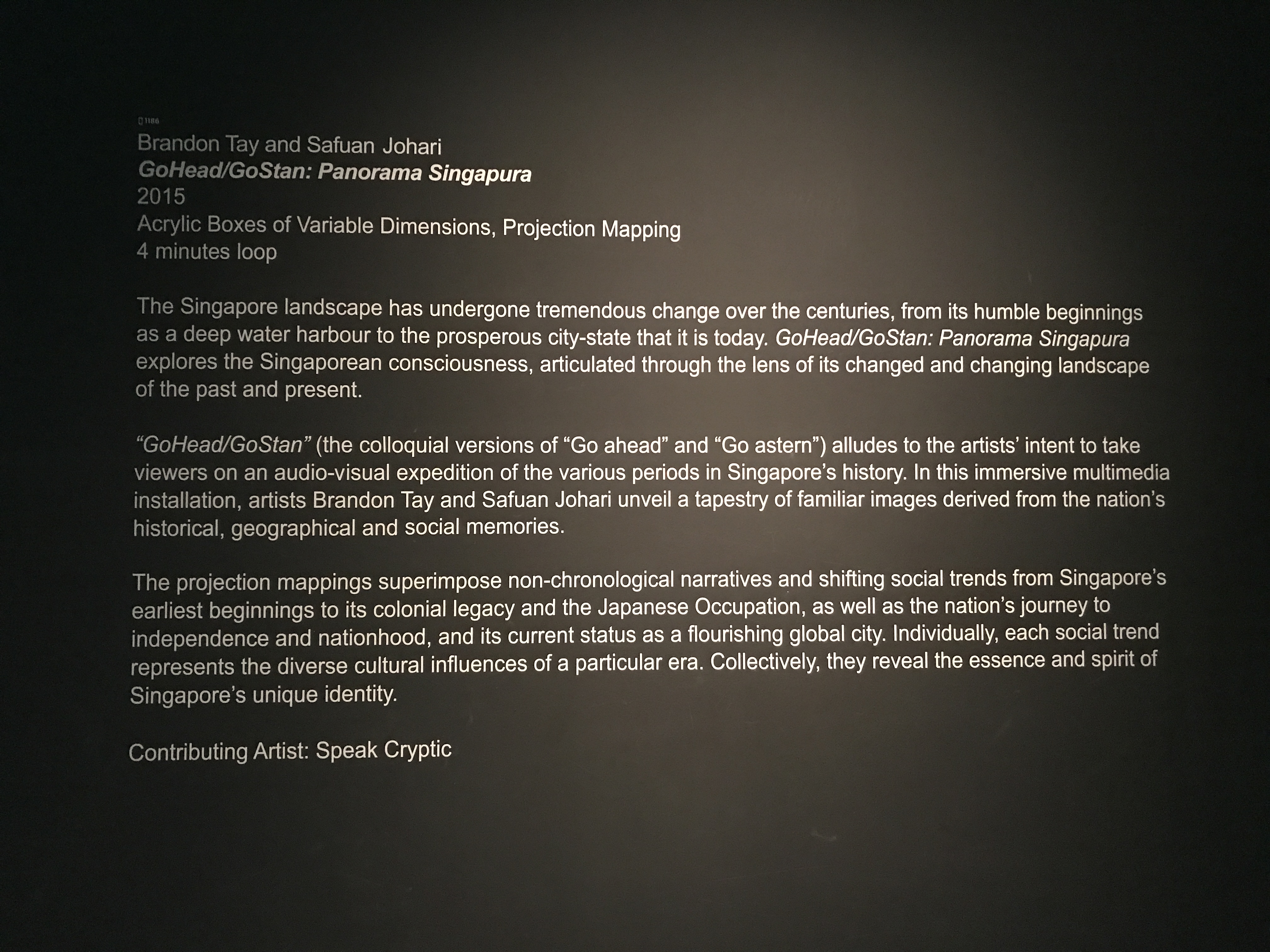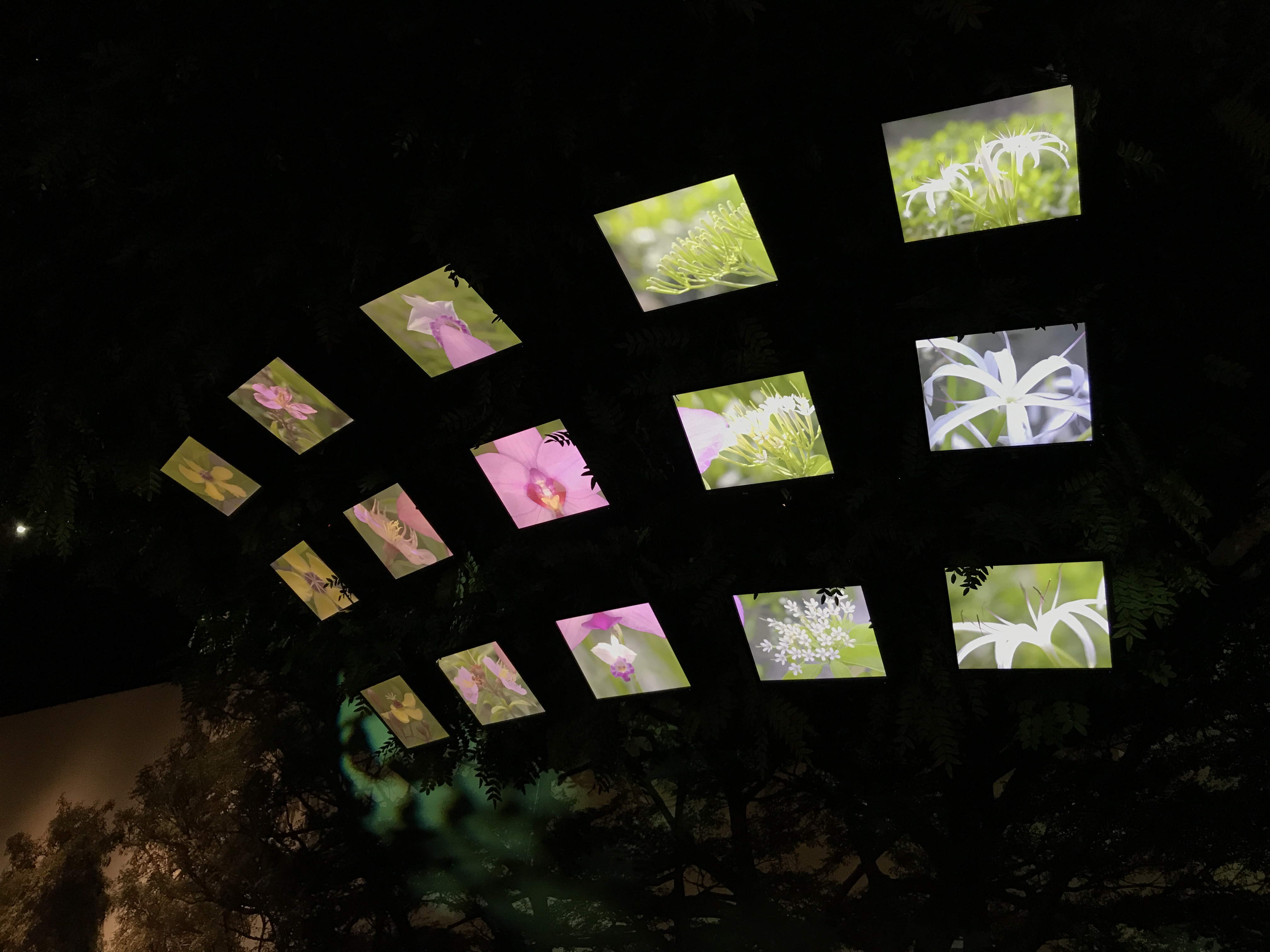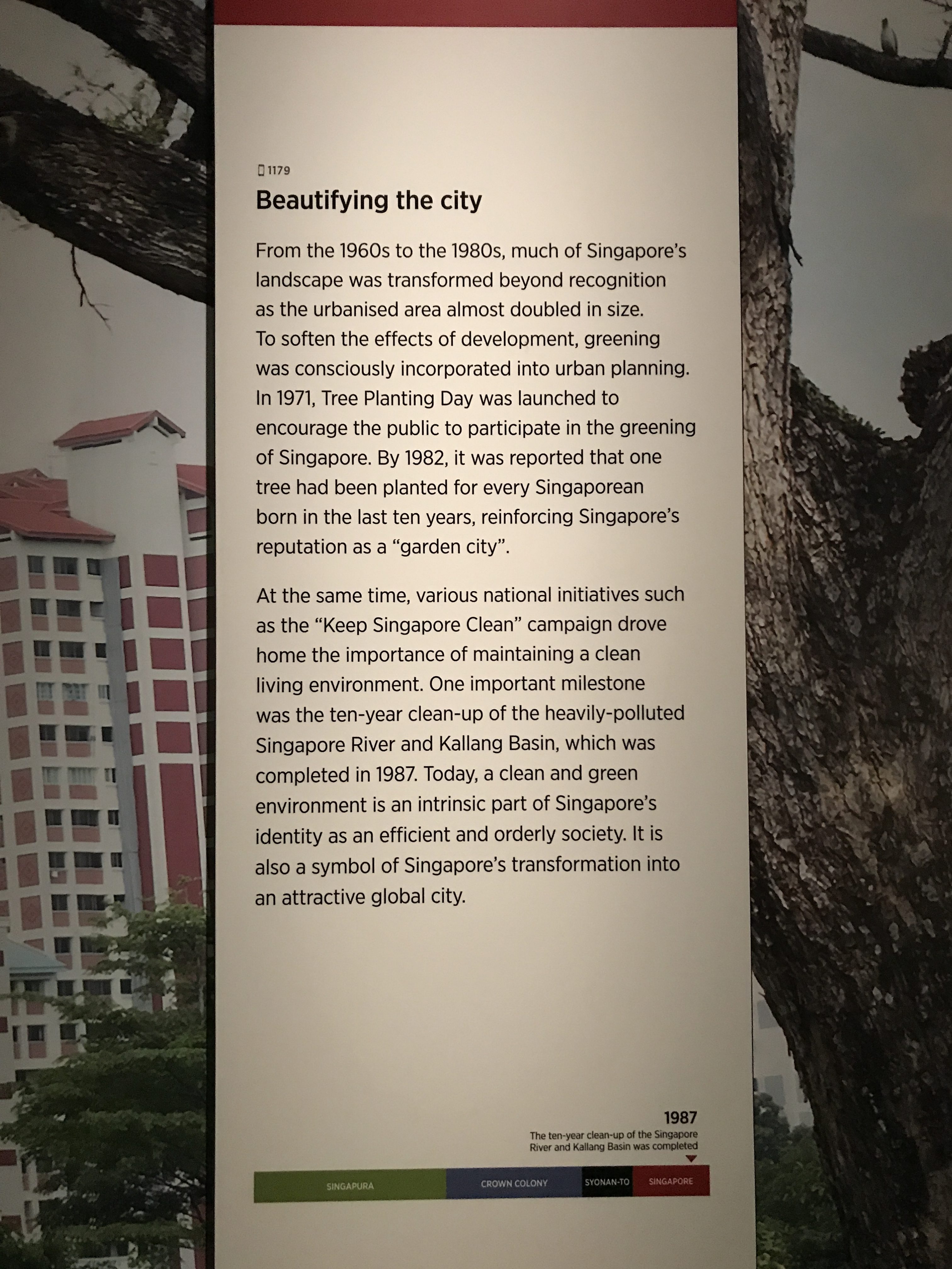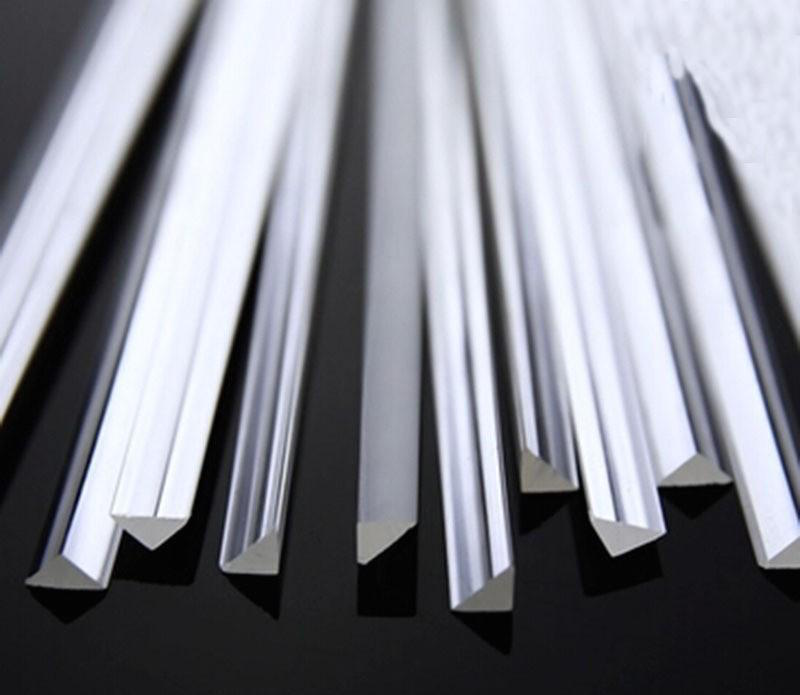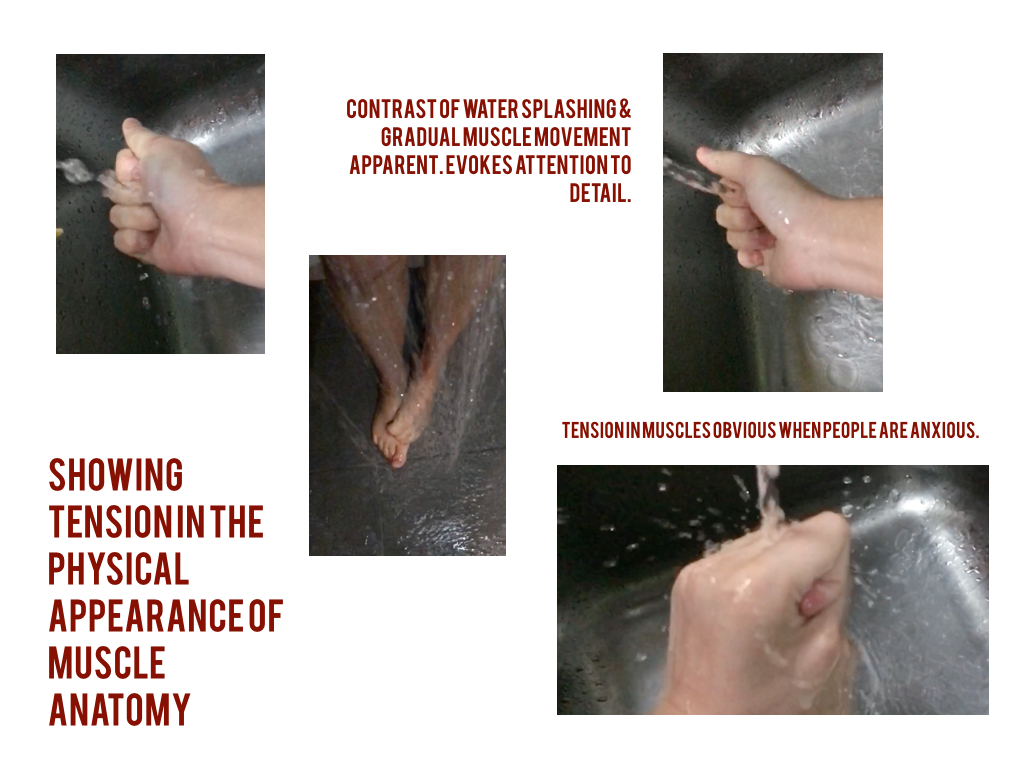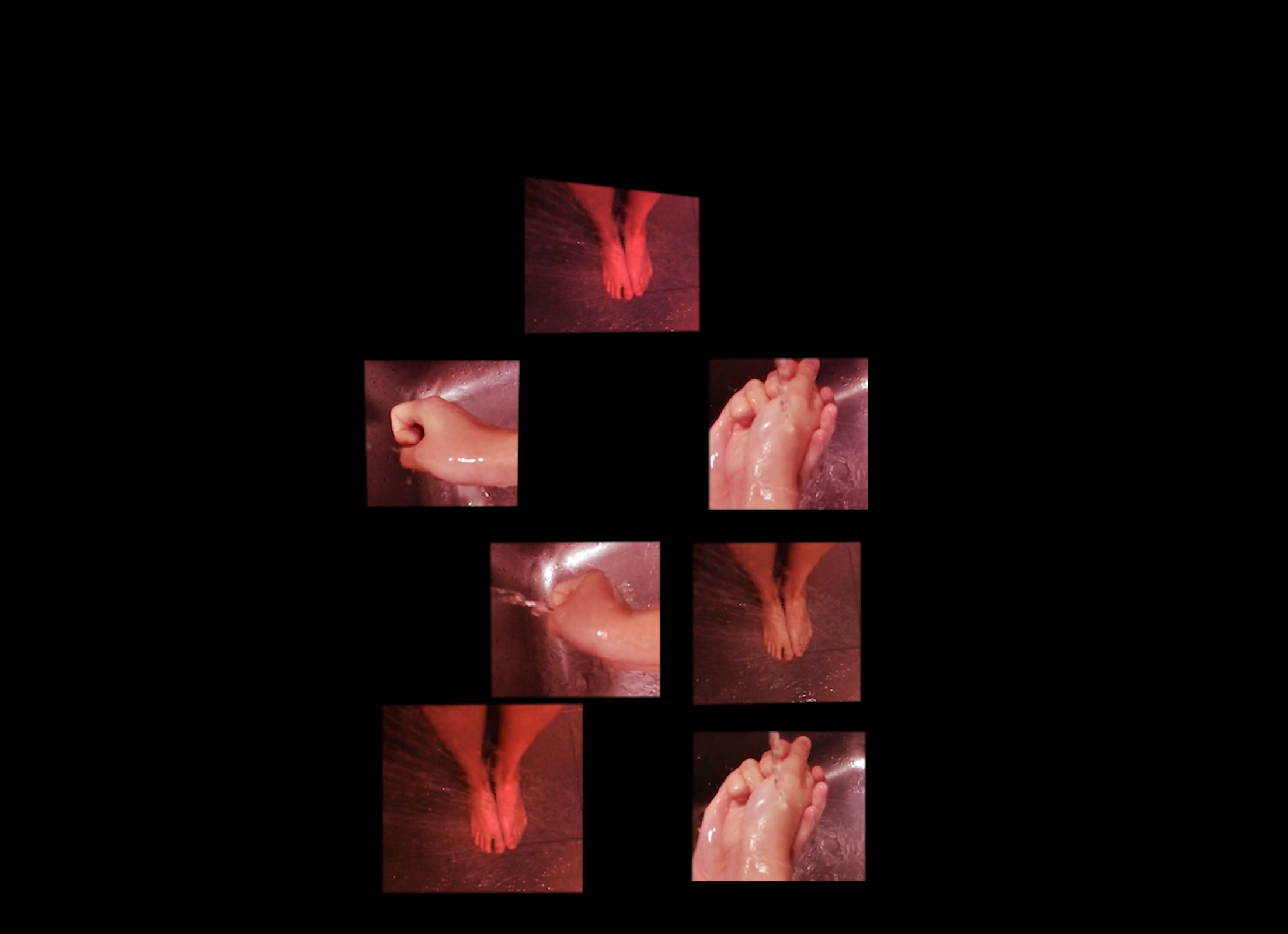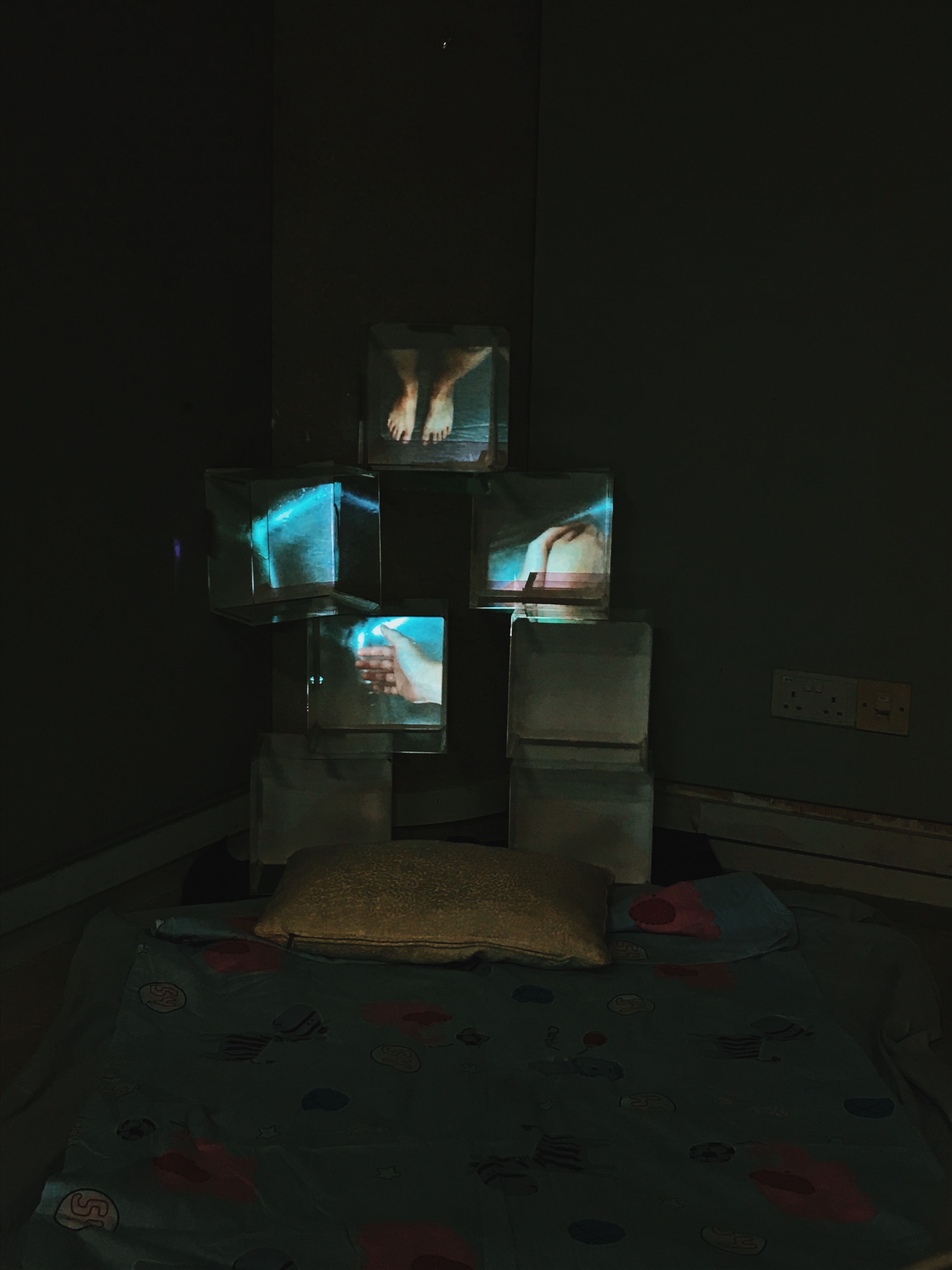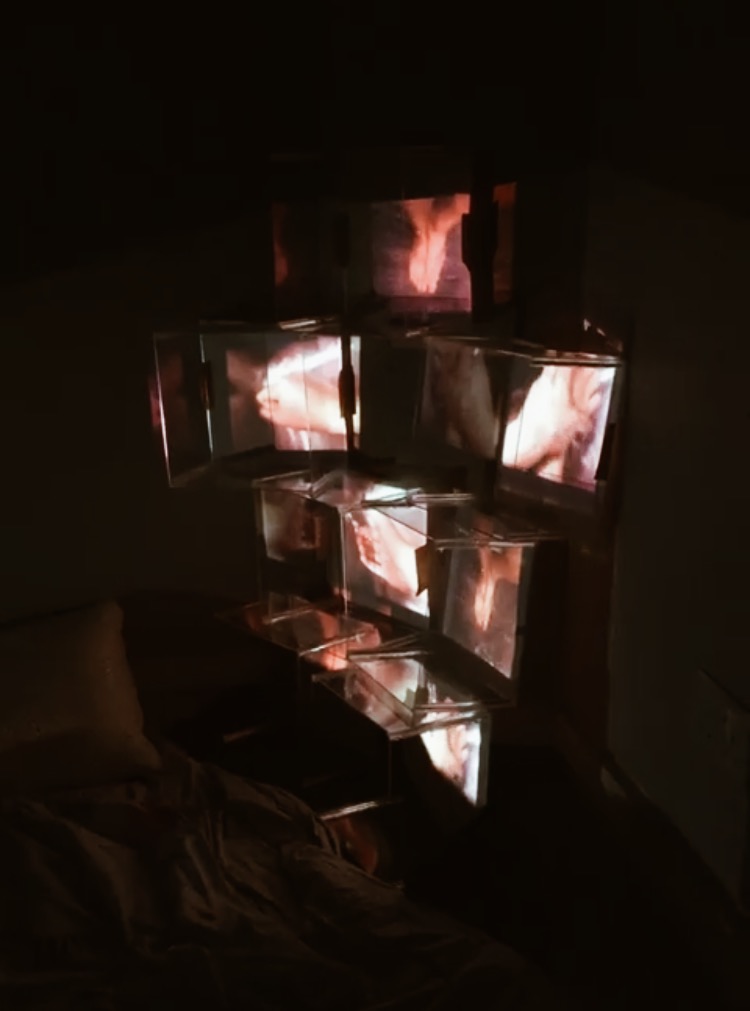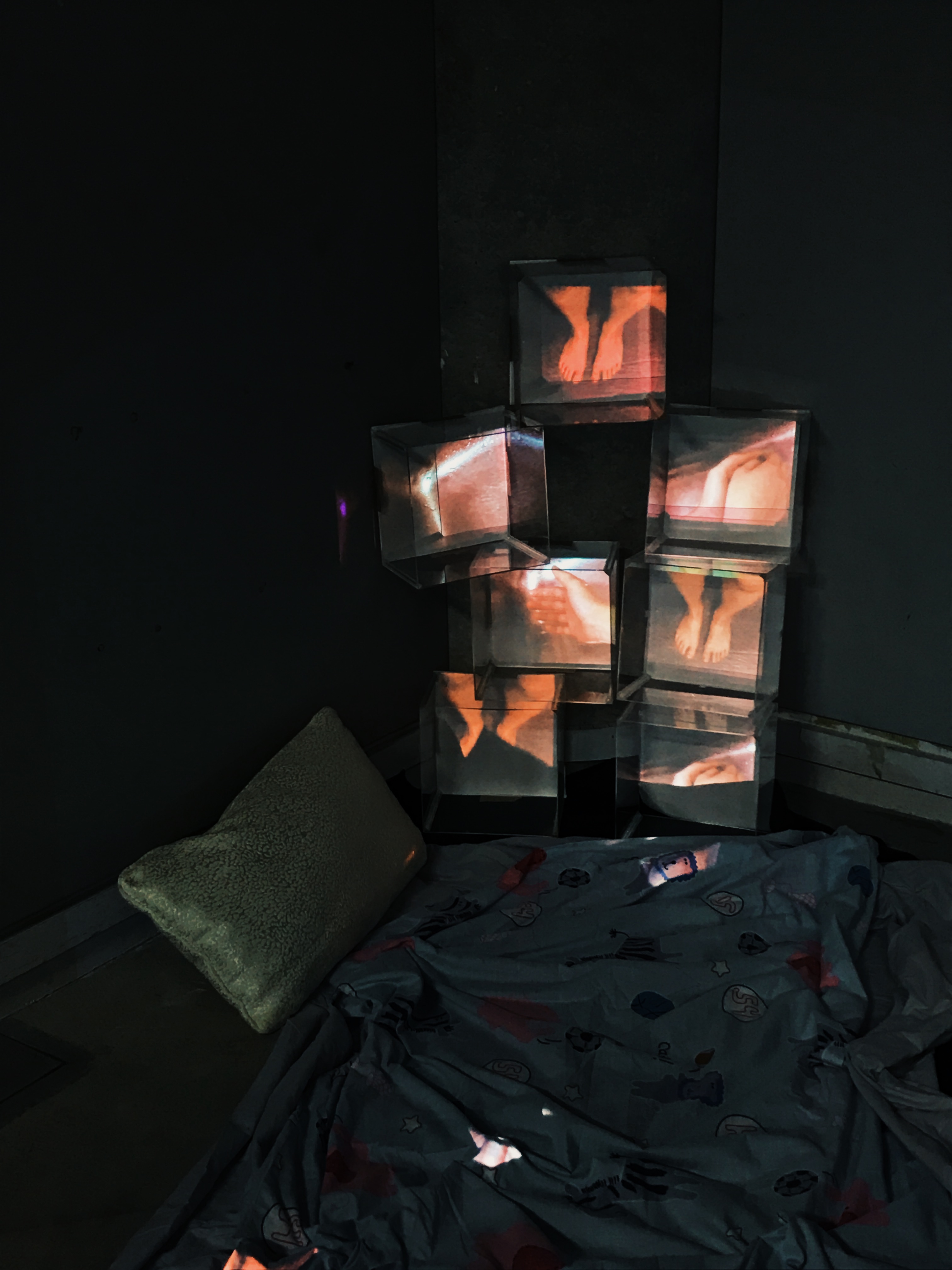Hi there! 🙂
In this last post for foundation 4D semester 1 🙁 , I will record down my process and final outcome.
ROOTS & DEVELOPMENT OF CONCEPT
How This Project Came About
This final project was inspired as a partial continuation of Project 1’s Task 1. It plays upon the ideas surrounding anxiety from within the psychological and biological realm as well as to portray its physical symptoms in greater detail. Task 1 of Curating Self as well as the thought of semester one ending was extremely influential towards the direction of my final project. In Curating Self, the beginnings of my anxiety are introduced within my OSS post where I talked about particular symptoms regarding it. My first semester in university was a whirlwind full of experiences which a couple of weeks ago, had led me to experience some sort of a panic attack due to the collapse of my pre-planned schedule. This became the roots regarding ideation and conceptualisation. Finding a correlation between the two, I created a rhythmic approach throughout the entire installation until the very end where silence is abrupt. The installation introduces an unnatural and eerie unexpectedness for the viewer’s eye.
ARTIST & INSTALLATION REFERENCE
Inspiration: Fortunate Encounters at a Local Museum
An installation titled, ‘GoHead/GoStand: Panorama Singapura’ (2015) by Brandon Tay and Safuan Johari was greatly influential towards this project’s art direction. The installation can be found in the National Museum Singapore. Their medium choice consisted of non-transparent acrylic boxes of contrasting, varying dimensions with the use of projection mapping to portray the imagery desired upon. The uniqueness making up this installation would have to be the ongoing motion pictures that were perfectly lined up along the edges of each box. Another thing that made the project exciting to view would have to be the changing pictures occurring wherever your eye moved along each part of the installation itself. Strips of lights lining the bottom edges were used to emphasise each individual box as if they were singular frames categorised depending on the colour of light that lit up whenever a video was projected in that particular ‘box’. Similarly, I have incorporated the same medium with the focus on a singular and intensely traumatic event.
‘GoHead/GoStand: Panorama Singapura’ (2015)
Brandon Tay and Safuan Johari
Location: National Museum Singapore
Imbedded below is a documentation of my visit 🙂
VIDEO
* Sorry about the audio (Fizah, Amanda and I were being our insane selves)
PHOTOS
You may refer to the below images for still-differences apparent for changes seen within the installation itself.
Installation set up before the projection mapping began once again.
Varying colors lit up to show contrast between each set up acrylic box.
The shadows contrasted by the projected imagery, boxes’ sharp edges as well as the coloured lighting have obviously helped create this sense of dominance and an eye captivating experience.
A full, angled view of the huge installation at work.
The moving images were quite mesmerising and helped capture the attention of the audiences’ short attention span. The installation itself had a lack of central focus which drove me to achieving for one within my final project. The rhythmic pacing of this installation was also relatively fast paced, allowing me to ponder upon; what would happen if I employed slow motion instead? Relating to this installation with the mindset of a panic attack also being fast paced, I wanted to capture the details within quick moving events or objects by slowing everything down. Some of the imagery being projected were also quite abstract allowing the audience to perceive the message portrayed in their very own way, which is what I too, wanted to achieve within my own project.
Since the projected idea within my head during that time was that my final installation had to achieve that slow motion effect to capture all those details and physical symptoms of panic and heart attacks, I was inspired by this project to create a variety of moving images with a central focus. To achieve this, I had to think specifically about my choice in site which I will talk about below.
If interested about the meaning behind this installation, here’s a snapshot of the work’s commentary attached.
‘Beautifying the Place’
Artist Unknown
Location: National Museum Singapore
Television screens were decorated with green plants juxtaposing the message of what used to be a green place, that now, is changed.
Another installation I was also inspired by at the same place was titled as ‘Beautifying the Place’. The artist for this installation was not named. The medium used for this work were a couple of television screens that came rooted outwards from the ceiling above. ‘Beautifying the Place’ inspired my thought process on how the viewer’s experience may be affected by the placement of an artwork especially concerning the use of angles and lighting. In this instance, the artwork came to me as something to be reflected upon within the concepts of the importance of a clean environment. The position of the audience was that of lying down on top of an artificial grass-ed platform. The clever use in medium of the platform was an important linkage as a sensory experience itself even when the main focus was to be directed above where photographs of what once was ‘green’ were being projected on these screens.
If interested about the meaning behind this installation, here’s a snapshot of the work’s commentary attached.
Alongside these installations I personally visited, you may find my other artist references for this final project, right here!
SITE CHOICE
Choice: Corner of 4D Classroom
Shown above is an image of my mini installation after our last critique session. My choice in site particularly concerned the angular structure of the walls. Corners of rooms are particularly seen as being a place of enclosure as well as being personal. The angles made by the meeting of two walls at a point creates the idea and feelings of being constrained and tied back in a sense. I did not want for my installation to be flushed straight against a flat surface so I incorporated the usage of the corner of our 4D classroom to create the idea of intimacy and being placed in your comfort zone, or a personal space for that matter. Note that the boxes are slightly curved inwards, portraying a subtle sense of the start of something about to be wrapped around. The meaning of my installation related to a personal aspect of myself, which provoked me to create a sensory experience that could also be related to my audience. Some of the ideas surrounding panic and heart attacks include the feeling of being trapped and being claustrophobic in a confined space, as if you’re facing it all by yourself and that there is nobody around to help you from what you are experiencing. Sometimes, thoughts of anxiousness and the feeling itself would make its way through my body before my bedtime. That is part of the reason behind the linkage of the physical appearance of a bed beside the installation itself. I will explain both into greater depth below.
FINAL PROJECT: PROCESS / DEVELOPMENT
Creation of Boxes, Direction in Video, Projection Mapping (Adobe Premiere Pro)
Acrylic Boxes
Example image which each acrylic box was modelled.
Since the process of each acrylic box made was messy and quite hazardous, I was unable to document the entire process in making. However, each acrylic box was modelled after the image shown above.
Each acrylic sheet I bought had a standardised size to them which made my process much more convenient since they made up the approximate dimensions I was looking for anyways. When placed together at the edges, they made a perfect cube.
Example image of triangular acrylic rods.
I used 4 acrylic sheets for each acrylic box made, having no front or back to them since a sheet of white paper had to be included in each of them for the projected videos to be playing smooth against when positioned inside the boxes. To create a firmer and tougher structure in case the boxes were to fall and break, I included the use of triangular acrylic rods with a 90 degree corner each which could meet in between each corner of the box.
In total, 7 acrylic boxes were made for this installation.
The steps to making one can be found below though!
How To Make One Acrylic Box (45 min each – excluding drying)
Materials needed:
4 Acrylic Sheets
Hot Glue Gun
4 Measured Triangular Acrylic Rods
Acrylic Glue
Masking Tape
- Line up the edges of each acrylic sheet against one another at a 90 degree angle
- Temporarily and firmly tape the boxes in place with masking tape for the gluing to take place
- Using a brush (a paintbrush was used in my case), dip it in the acrylic glue solution
- Apply a small layer along the edges where each sheet meets, a chemical reaction should form where the plastic slightly melts in order for a firm connection to happen
- After this dries, measure the particular height of the box’s corner by lining it with the acrylic rod that will be stuck in between.
- Cut and etch the acrylic rod slowly with a pen knife
- Using a hot glue gun, stick the triangular acrylic rod neatly against each corner
Originally, the intention was to use the walls of the 4D classroom as the backing surface for the videos to be projected upon. However, after trial and error, I had forgotten and eventually realised that the surface that was to be projected on was curved which meant that my videos were distorted as well.
The process of making each acrylic box was rather tedious but I’m glad I experienced the creation of the physical aspect of an installation as well as the media experience.
Direction In Video
Reasoning / Meaning
Videos included for the projection of my installation were of slow motion, a component of edited time and experienced time. Only 4 videos were used and projected within these acrylic boxes for a duration of 4 minutes. Some of the videos were repeated in more than 1 box, in total, making up 7 of the boxes placed at site. Portrayed below are screenshots of the original videos used without the portrayal of the red tint.
When tense, slight movements in muscle may be evoked. There is a sense of agitation and panic within the body that psychologically directs us to such muscle movement. Through my videos, I wanted to show this exaggeration on a bigger level especially since the details are captured in slow motion. The large volume of water poured is also an exaggeration of a symptom of anxiousness, which are sweaty palms. Instead of portraying mere droplets of sweat, I wished to entice viewers with a more intense version through the art direction of flooding and constant flowing of water. The constant rush of water is also significant when considering the seriousness of the theme. Panic and heart attacks are not just a one time thing, meaning they may strike at any random moment. The flow of water shows the build up momentum of anxiety which is shown as a constant rhythm within my installation until the very end when each image fades away to pitch blackness, creating a sudden irregularity when perceived by the audience. The audience is left to question the abstractness of it all and reflect upon this sudden turn of things.
Other usages of symbolism will be talked about below.
The videos were all recorded with the quality of an iPhone 7.
Projection Mapping
Adobe Premiere Pro
The software used to create the project mapping was Adobe Premiere Pro as taught to me by Lei. Since the entire process involves a variety of technicalities towards it which is quite difficult to understand through words, it is possible to check out any example processes on youtube showing how to make your very own project mapping with several different videos occurring at one go.
You may search up: How To Project Map Several Videos with Adobe Premiere Pro.
Shown below are screenshots depicting my process and set up on computer during the installation.
An overview of the workspace I was working with on Adobe Premiere Pro. The bottom is your timeline where you import media and audio from your library which is situated on the left hand side. You can adjust your settings accordingly on the right and above.
Zoomed in perspective of video and audio workspace.
Above: Video footage (in sequence of video timeline) – shorter length videos disappear first while longer ones keep running
Below: Sound is copied and pasted; audio is repeated throughout video and as it approached the end, the heartbeat sound effect ends first while the water audio ends later with silence encompassing and overtaking all sounds.
Sounds were further amplified by 10 – 20 decibels to create intensity throughout the ongoing installation.
Preview window as projected through the digital projector.
FINAL
Set Up & Presentation on Critique Day
Actual duration of installation: 4 minutes
Here is a short glimpse of my presentation as it nears the end:
Special thanks to Fizah for documenting this for me!
Shown below are photos of the presentation itself:
BEFORE the red tinted filter was added to the individual videos on Adobe Premiere Pro
Before Presentation
AFTER the red tinted filter was added to the individual videos on Adobe Premiere Pro
During Presentation
Due to the lighting, it is quite hard to see the detailed aspects of my installation. However, I will mention the rest of the symbolism that has been incorporated into my work as below.
Blankets & Pillow
Decorated with cartoons; a blanket I brought in from my childhood days. In this installation, the purposeful choice in blankets is juxtaposed against the seriousness of the subject matter. With childish motifs decorated within the blanket, it purposefully contradicts the serious event of a panic/heart attack. At times, there are people who would say, ‘Oh, that almost gave me a heart attack!’ in reaction to a surprising or shocking event that they have experienced. The saying is common in today’s expression and has no relation to the true serious event of a heart attack or panic attack. With the blanket, I tried to correlate the both of them together. This is contrasted by the symbolised representation of maturity of the subject through the patterned pillow that is exquisite, texture-wise in comparison. When seen in closer detail, the blanket is crumpled and not smoothened out to demonstrate the feelings of tension and constraint felt during the event of a panic/heart attack.
Bed
The bed is representative of my own bed. Thoughts of anxiousness sometimes overwhelm me right before bedtime.
Acrylic Boxes
The transparency of the boxes shows the biological internal tension within our organs in an abstract and outward way. A reversed play of internal and external struggles is demonstrated throughout the entire installation. The tension seen within the hands’ muscle anatomy demonstrates the pressure held within our trapped bodies, as symbolised by the acrylic boxes. The red tint is used to intensify the experience, emphasise upon the seriousness and represent the color of our organs.
Sounds
Heartbeat: Slow and steady to represent a normal state, juxtaposing the underlying meaning (Sound obtained from Youtube)
Water gushing: Representative of an exaggeration of sweating palms, a sign of anxiousness. Made by allowing the tap to run and running my hands through it to create varying patterns within the soundtrack. (Recorded with an iPhone 7).
Time
Role In Installation
Experienced/Psychological Time & Edited Time (Slow Motion)
Even though the installation was only 4 minutes, edited time of slow motion was involved throughout the entire duration making the entire experience feel much longer. This was intentional as the audience was supposed to feel a detailed version of an actual panic or heart attack, typically taking only 10 – 20 seconds. I have stretched and turned a few seconds event into one that felt longer than expected. The slow motion helped more to emphasise upon this. There is also a major role in which unexpectedness plays within my video, caused by a sudden irregularity after a constant rhythm was familiarised by the audience. This rhythm was addressed by the constant looping of a slower version of a steady heartbeat in comparison to running time, which is suddenly replaced with silence and the flow of water. Eventually, the sound of water also abruptly stops even while the videos are still playing, with one image disappearing one after another.
The audience is also constantly questioning the installation throughout since the eerie unexpectedness keeps coming back and no one is really sure when the experience will end or if anything will pop out at you. Panic / heart attack victims feel that especially as they too, are unsure if they will be alright after their experience.
There is also very little movement with the only constant rhythm seen in the muscle movement being looped. In regards to causality, the sound does not follow with the what is projected on video visually. There is unexpected causality and narrative since there is no past, present and future. Everything is on a constant loop which is later interrupted with irregularity of images disappearing.
The subject is physical and representational, using hands as an abstract expression/motif in the meaning of my work. The emotional content is thought provoking and unsureness; you do not know what to expect.
After Presentation
Clearing up the installation
Thank you for this semester Lei! This class was extremely memorable and I have learnt so many things I will take with me in the future 🙂 Also, thank you for teaching me how to use Adobe Premiere Pro & how to projection map!
